If you can measure it, you can improve it
Do you have a desire to work more systematically with DEI, but need support in gaining insights about your organization?
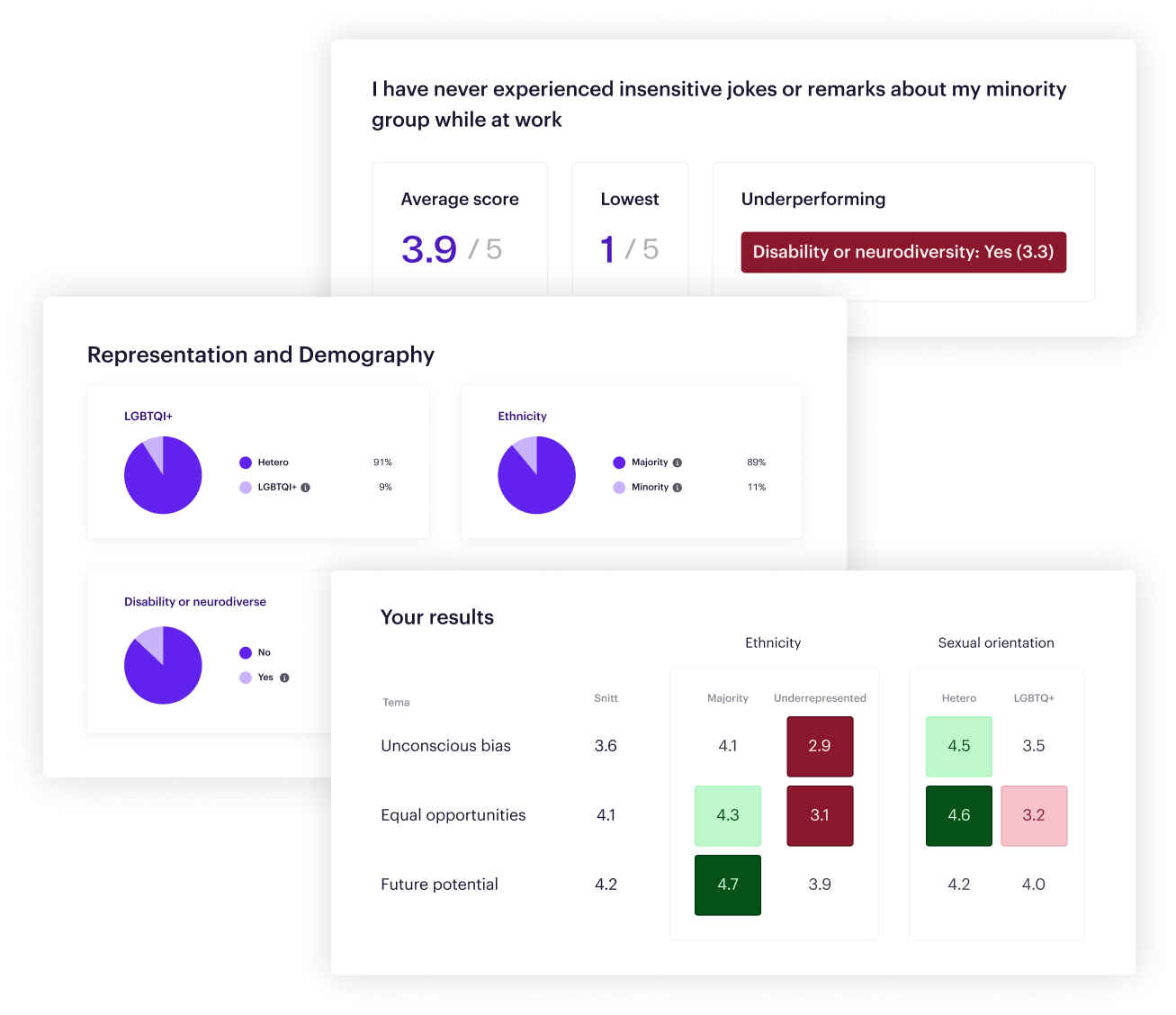

To leverage DEI in your organisation, you need answers to questions you're not allowed to ask
It is a fact that a lot of the information needed to understand various groups' experiences of the work environment and corporate culture are strictly personal and private. For example, it may be useful to know something about employees' ethnicity, orientation, or functional level – to understand if they experience the culture differently from the majority. At the same time, it is impossible for employers to directly obtain this information due to employees' privacy rights.
This is where we can help.
As a third party, we gain insights into what demographic groups your employees belong to and their experiences in the workplace (on a voluntary basis, of course). We then process the data before presenting a report to the employer. The results are presented in a way that ensures no individual can be identified

Top-notch Data Security
We have gone the extra mile to ensure that the data we collect is processed according to the highest standards of data security and privacy. Here's the brief version:- All data is stored in Azure Database for PostgreSQL, region Norway East.
- We operate as a third party between the employer and employee, ensuring voluntariness and anonymity.
- Results are presented to the employer in a format that does not allow identification of individual employees.
Read more about data security and privacy
How do we map diversity and inclusion?
We distribute a tailored survey that assists companies in mapping how various demographic groups experience inclusion, equality, and belonging in the workplace.
The survey is developed with a strong emphasis on voluntariness, anonymity, privacy, and data quality
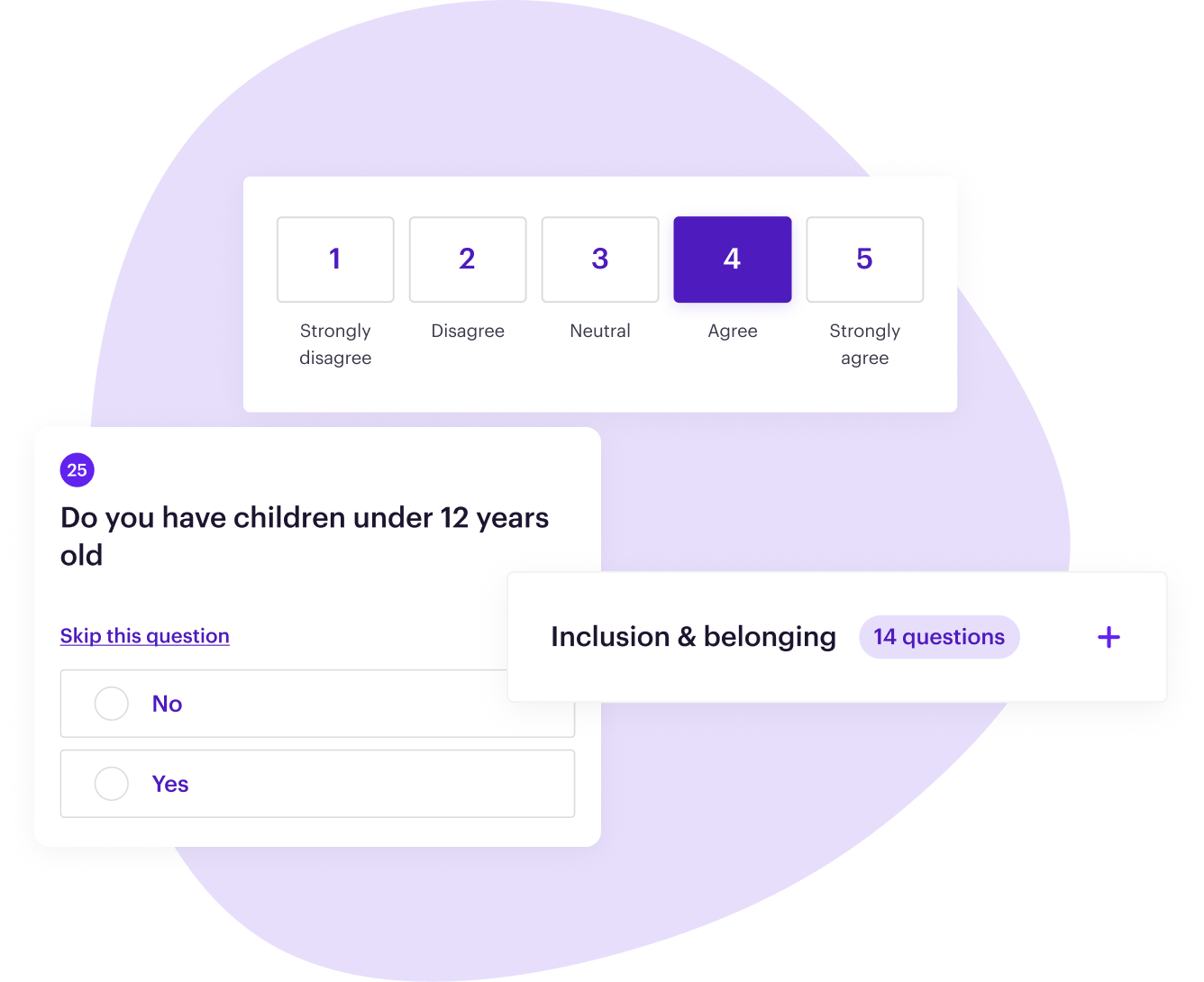
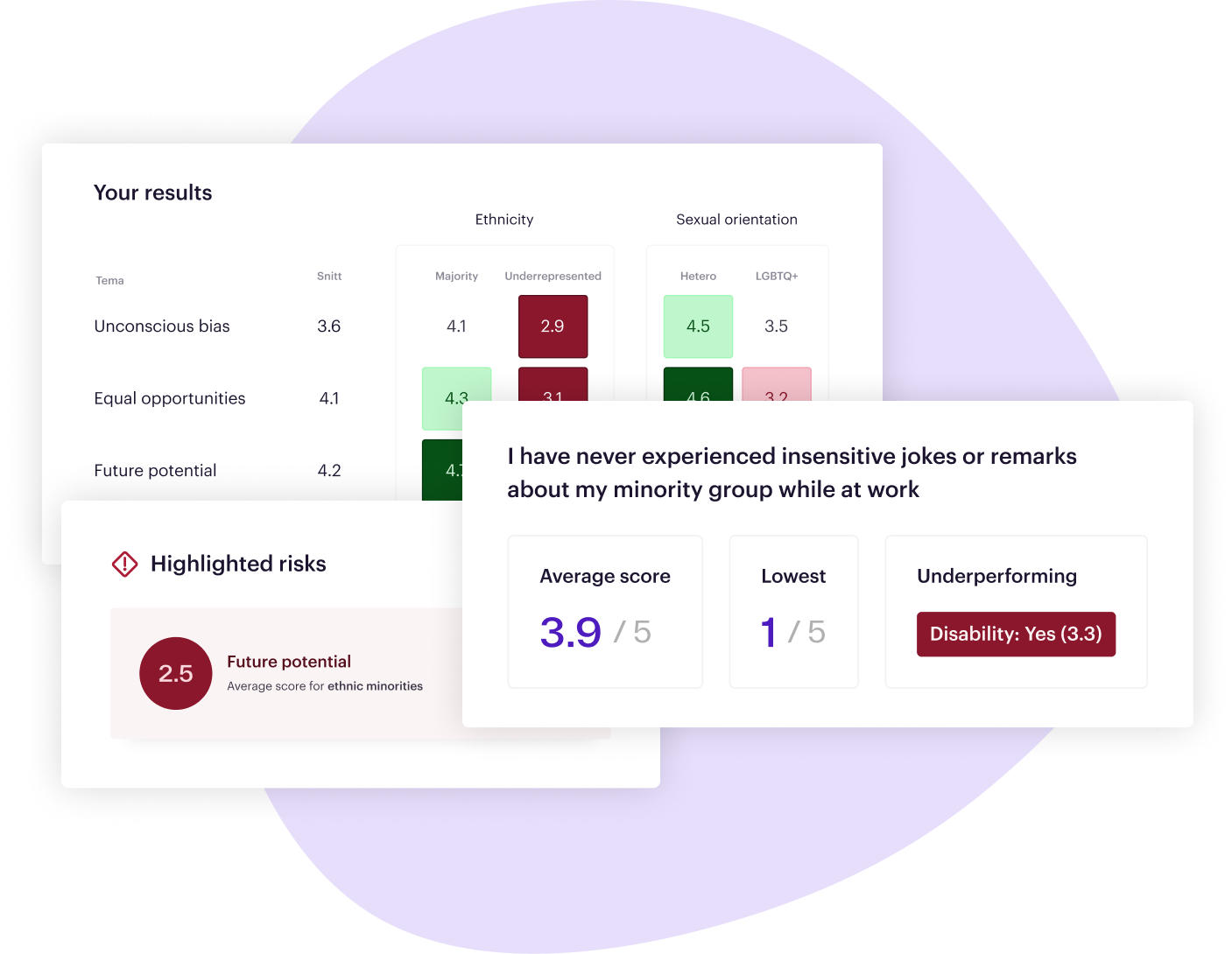
We identify the patterns for you
We process all the data, score, and anonymize them before presenting the results to the employer. In the report, it's easy to see where the greatest risk and opportunity areas lie.
The survey is standardized, allowing you to track development over time on specific indicators and compare your results with average data.
From insight to action
Gaining insight is one thing, but what actions should be taken to improve? Based on the results, we recommend specific, research-based measures with proven effectiveness.
The results are presented in a way that makes it easy to identify which actions should be given the highest priority.
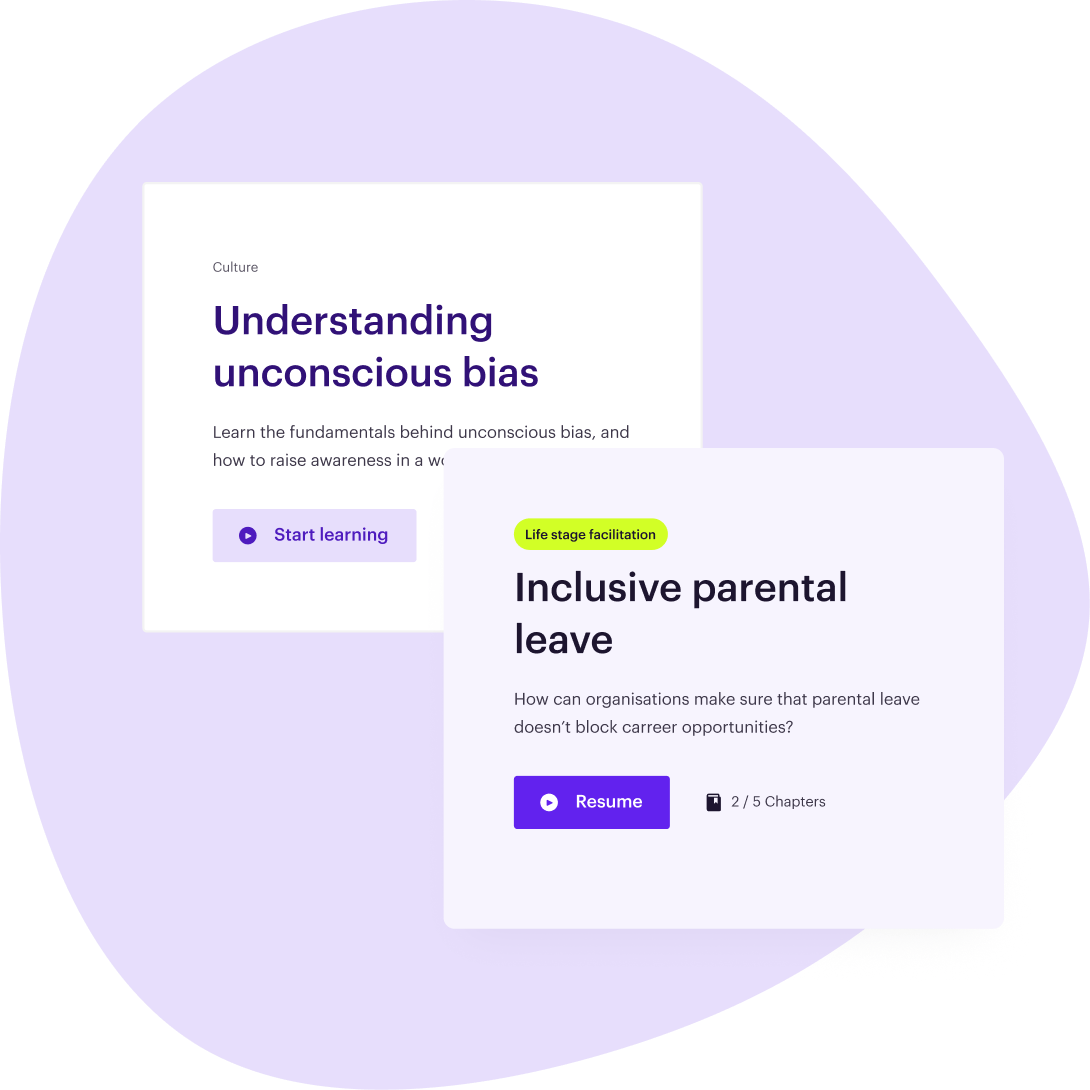
Free webinar!
Learn how AutoStore works data-driven with equality, inclusion, and diversity (in Norwegian)
AutoStore used our survey to map how the organization scores within equality, inclusion, and diversity – and then called for an all-hands meeting to present the findings together with Equality Check
Equality Check’s software let us access DEI blind spots that were incredibly helpful in understanding how to further develop our inclusive workplace culture
Merete Vårvik Matre • VP, People & Community • Autostore
Curious to see what the report actually looks like?
We've created a sample report for those who want to take a closer look at how the results are presented to the employer.
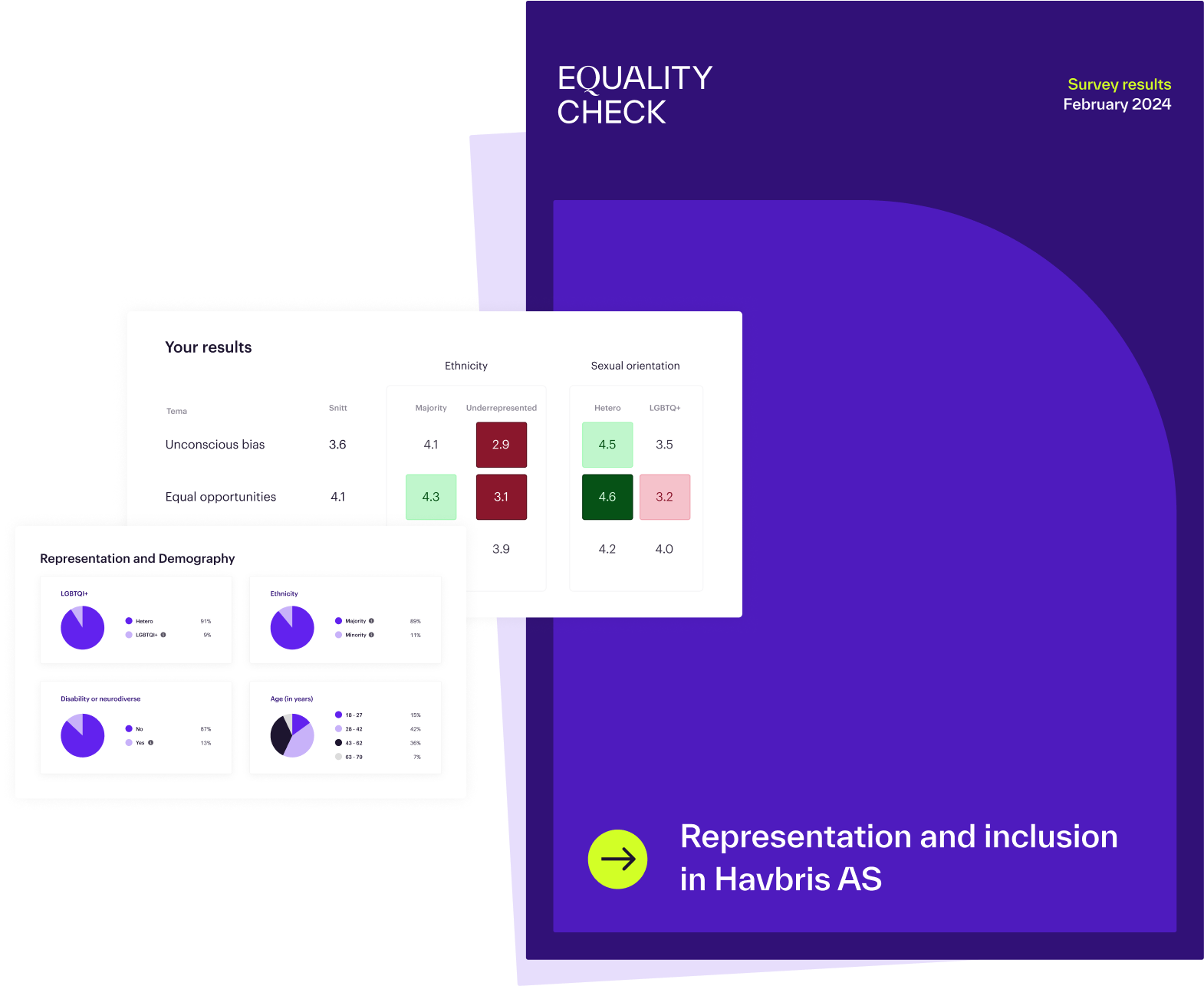
Typical questions related to the use of our tools may include:
Where is the data stored?
The data is stored in Azure Database for PostgreSQL, region Norway East.
What type of personal information is captured in the survey?
We ask two types of questions: questions about inclusion and belonging (such as whether you experience equal opportunities), and questions about demographics (such as gender, ethnicity, sexual orientation, functional level, etc.)
Why are you able to collect such sensitive data?
There is a general consensus today that employers cannot collect data about employees defined as "special categories" in GDPR (such as ethnicity, sexual orientation, religion, etc.). For an employer to be able to collect that type of data, it must be:
Completely anonymous. In most organizations, it would be impossible to make this information completely anonymous because it often involves characteristics that could lead to the identification of individuals.
Completely voluntary. Due to the power asymmetry between employee and employer, employees may feel compelled to provide information, and therefore, voluntary consent cannot be guaranteed.
Equality Check is an independent third party and can therefore ensure voluntariness and anonymity. We collect data directly from employees based on their consent and present data back to the employer in an anonymous format. We never share data from groups of 5 or more, and we have stress-tested the system with external statisticians and lawyers to ensure that data presentation is indeed anonymous.
Read more about the legal assessment of this in a separate document from our lawyers.
How long do you keep the data?
We store personally sensitive data for the duration of the survey, which is either 1 or 2 weeks. This is partly to ensure that employees can choose to withdraw their consent. After the survey is completed, the link to identifiable markers is broken. Email, company name, and industry are deleted, and several data points are bundled. The data is stored in a large, anonymous dataset where individuals cannot be identified.
Do people find it uncomfortable to answer these types of questions?
We have sent out surveys to several thousand employees, both in Norway and in countries where equality, inclusion, and diversity are far less mature - even illegal (such as Poland and countries in the Middle East). In both Norway and the mentioned countries, less than 4% of employees said they found it uncomfortable to answer the questions.
Our experience is that underrepresented groups often appreciate answering these types of questions even more than the majority - precisely because it's an opportunity for their opinions and experiences to be heard without them needing to expose themselves.
Good communication is important before sending out the survey, where you inform about:
Why you are doing it
How privacy is handled and data is used
How you will follow up on the results
We have created a template for communication in advance and are happy to help with this.
Wouldn't it create internal unrest to ask these questions? Could employees become more dissatisfied than they actually are?
We have developed the survey in collaboration with researchers, specifically with the aim of ensuring that people do not respond more negatively than they actually feel. For example, all questions are phrased as positive statements. If there is a selection bias in the responses, it will be a positive selection bias (i.e., people respond more positively than they actually do).
Employees, or groups of employees, who may be dissatisfied are already aware of this and often discuss it among themselves. Revealing this dissatisfaction will not create more discontent - quite the opposite. All our experience from companies that have sent out surveys shows that employees respond positively to this. Those who are satisfied do not change their minds, and those who are dissatisfied with something are happy to be heard.
Can't we just include these questions in the employee survey?
You can include the questions in your employee survey, but then you will only have the responses divided by women and men. As an employer, you do not have the opportunity to ask more granular questions about demographic background (see question above). After sending out the survey in many companies, we see that the valuable answers that provide concrete solutions for the organization to harness the potential of all employees lie in the more granular data.
If you only look at women and men, you will not get the right nuances. It will provide an average answer. To exaggerate: if you stand with one foot in the freezer and one hand in the oven, the average will be good.
We are concerned about IT security - how do you address that?
We take IT security very seriously. We actively work towards achieving ISO27001 certification, with the goal of being certified by summer 2024. Read more about security here.
We prioritize privacy - how do you safeguard it?
We have a strong focus on privacy. Read more in our privacy policy here.
We cannot do this until we know that we can solve all the problems, and we do not have the capacity for that now.
No one can solve everything at once, no matter what problem they're trying to solve. Mapping out and setting a plan for what to do first, and what to prioritize later, is an important step.
Employees also don't expect everything to be solved - the important thing is to have a good plan where you take the right actions first. You can only do that if you have done a mapping.
We're afraid there will be too many surveys (survey fatigue).
Many of our clients have both pulse surveys and employee surveys in addition to our survey. These are completely different tools, and we do not experience them conflicting with each other. Our survey provides a good user experience and takes only 5 minutes for employees to complete. Everyone who has completed our survey has been well informed about why it is important for employees to respond, and we have never heard of survey fatigue or received low response rates.
Our experience is that survey fatigue occurs when employees do not believe the survey will be used for anything (as many employees experience with employee surveys and pulse surveys).







